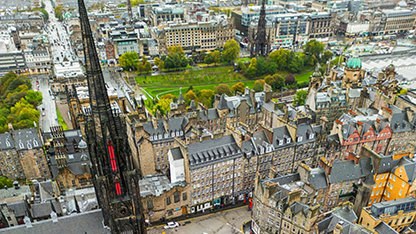This insight paper considers the urban environment as a factor of health and well-being. It helps built environment professionals make use of this knowledge to integrate health-promoting policies and design into new developments.
Published date: 18 June 2018
Many people think of healthcare and genetics as the primary drivers of health and well-being. Yet social and environmental factors play a considerable role. Globally, around 23% of deaths in 2012 were attributed to the physical environment including air and noise pollution, housing, transport and other factors. Further, chronic health conditions are on the rise globally and imposing a heavy financial burden. Many of these conditions are preventable and strongly influenced by the built environment.
There are, however, significant differences in the situations faced by low- and high-income countries. At present many of the world’s fastest growing cities are struggling to deal with the kind of health problems encountered in developed countries in the 19th Century. But there are also considerable overlaps where priorities are shared. These include the need to address:
- Access to affordable housing
- Lack of access to greenspace
- Lack of opportunities for physical activity in daily life
- Learning from communities about their perceptions of health and place
- Noise and air pollution
- Preparedness for the impacts of climate change
- Thermal comfort and air quality
These priorities are sub-strands of one of the most difficult challenges facing the world today: how do we accommodate the huge numbers of people crowding into our cities in a way that ensures inhabitants’ long-term health and well-being? This is the central question around which the issues discussed in this paper converge. It is also a major pre-occupation for the World Health Organisation (WHO) and the UN’s Sustainable Development Goals.
Built environment professionals can contribute to the reduction of negative effects and the maximisation of positive health benefits through the design and development of buildings and communities. In his foreword to the paper, RICS President John Hughes argues that health and well-being in our cities needs to be understood and treated with the urgency it deserves.
It is a ‘critical matter’, he notes, ‘that will result in widespread human distress and enormous financial costs in the long-run if we do not take the appropriate measures in the short term.’














